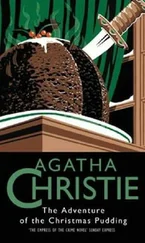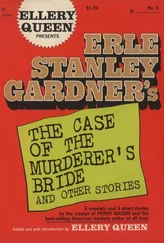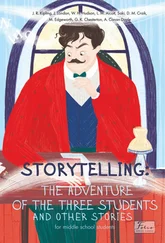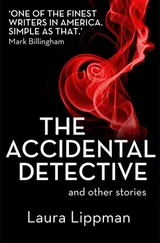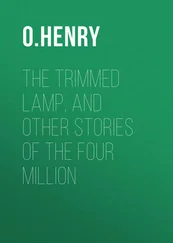
Mikal has diarrhoea. She gives him Imodium and Dioralyte but he remains badly dehydrated. He has a headache that will not go away.

Neither of them has the strength to move Mikal’s body.

Arvind says, “Death, you are no different to me than my lover with your cloud-coloured skin, and your hair a mass of dark cloud, your hands like blood-red lotus, and your lips the colour of blood.” She says, “What is that?” “Tagore,” he says. “ Maranare tuhu mamo . Do you not remember?” She puts her hand on the smooth skin on the back of his neck and waits till it goes cold.

She has no sense of how long her labour lasts. Every time she thinks that death would be easier than this she remembers the baby and she manages to find the strength from somewhere. Jon sits on the far side of the room. His face is grey. She thinks he might be a doctor and this reassures her. She drags herself to the medicine cupboard and finds a plastic bottle of liquid morphine. She takes a sip. Not too much or the baby will die inside her and rot. Is that how it works? She knew these things once.
A contraction, then a contraction, then a contraction. It is like putting her hand into a flame, taking it out then putting it in again. She prays. She remembers that there is no one to pray to, that there is no one for hundreds of millions of kilometres, no life of any kind. The thought is a gale sweeping through the empty rooms of her head, slamming doors and smashing windows. Another contraction. If only she could let this happen to her. If only she didn’t have to push.
Lights flash behind her closed eyelids, like the flashes they see at night, the remnant particles of supernovae giving up their energy to the retina. Then there is an animal on the floor and it is moving. She lifts her vest and lays it against her breast. The world vanishes and there is darkness for a period. Then she opens her eyes and expects to see the hippo and the lion and the monkey and the snake and the eagle but sees instead that she is lying in a pool of blood in the corner of a room with aluminium and plastic walls and there is a baby in her arms.

It is easier to think about someone else’s welfare instead of her own. She wraps the baby in towels. He cries. She comforts him. She eats two portions of everything for the first five days, reducing her intake only when she can feel her strength returning. She cannot bear to eat the placenta, not yet at any rate, so she freezes it. There are more supplies now that everyone is dead.
The bodies of Mikal and Arvind are decomposing. She drags them into the corridor and seals it. She is living in a single room now.
She watches nature films. If there are no human beings it no longer causes her pain. It is just a beautiful planet far away. Gelada monkeys eating grass in the Ethiopian highlands. Marine iguanas. A pride of lions bringing down a female elephant. When the baby will not be comforted she holds him and walks in circles until he sleeps. He looks into her eyes and holds her finger and something like a smile passes over his face. She remembers that Mikal is his father. She remembers how they ran through the beech wood below the sawmill, the bluebells coming up through the dead leaves. It seems like such a long time ago. She knows that this will not last forever. If the power fails, if the oxygen fails there is nothing she can do. There is a blister pack of Moxin on the shelf.

Two grad students in Seattle solve the mystery. It was a freak surge of solar wind which knocked out the oxygen sensors on the Halcyon . They run a simulation and run it again and run it again. Fitting a shield takes two weeks. The Sparrowhawk is launched a month later. Serendipitously it has to spend only thirty-six hours in orbit waiting for the best slingshot opportunity of the past two years. The journey is estimated to take fourteen months.
The launch happens only two months after the sandstorm takes out the station’s transmitters.
There are six astronauts on board — Mina Lawler, Vijay Singh, Giulia Ferretti, “Bear” Jonson, Mary D. Eversley and Taylor Paul. Two months into their journey there is still no communication from Endurance. It is assumed that everyone is dead. The best-case scenario is that the station lost power and they will have to bury the bodies, clean up and fix whatever is broken. The worst-case scenario is that those bodies have been sitting inside a warm, functioning station for fifteen months.
They monitor the surges in the solar wind with some trepidation but there is no recurrence of the previous problem. Only during descent does the mission skirt the edge of disaster when one of the parachutes fails. The landing is uncomfortable but the lander remains intact.
They overshoot the station by twelve hundred metres. It is not important. They are in no rush to perform six funerals. When everything else is up and running, when they’ve carried out a few shorter EVAs, they will head over and take a look.

She is woken by a tremor passing through the rock below the station. She wonders if it is a seismic shift, or simply a hallucination. It is getting progressively harder to tell whether events are happening inside or outside her head.
In the morning there is no doubt. Through the sand-scratched window, in spite of her failing eyesight she recognises the shape instantly. She looks into the baby’s face and says, “We’re going to be saved.” She is unable to stop herself weeping.
But no one comes, not on the first day, not on the second, not on the third. She wonders if something terrible has happened, if there is no one alive in the lander. She can think of no way of signalling to them, either physically or electronically. Ten days go by. She and the baby are weak and getting weaker. Previously he cried when she couldn’t feed him enough. Now he is silent. She is looking through a milky fog that will not clear. Her joints hurt.
It is the last thing she does. She gathers the remaining solid state light sticks. She waits for darkness to fall and tapes them to the window. She can do no more. She lies down with Michael on the mattress and pulls the blanket over the two of them.

They run the tape again. Is it lens glare? Reflected sunlight? They wait an hour. It is still there, visible through both windows. Vijay thinks he can see a shape but it is fading in the growing daylight. They take a photograph, increase the contrast and blow it up. Mina says, “Dear God in heaven.” The words HELP ME are spelled out in broken light sticks in the triangular window. Light sticks shine for two days max. Someone is alive in there.
Читать дальше


